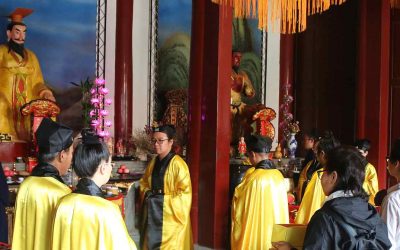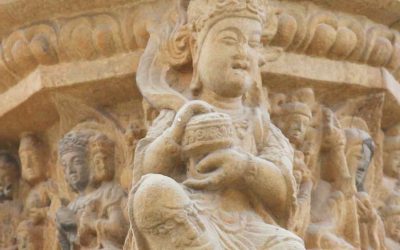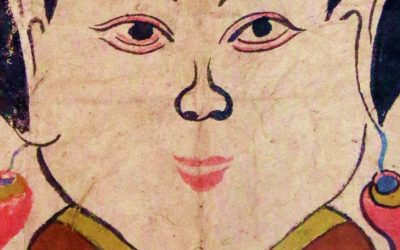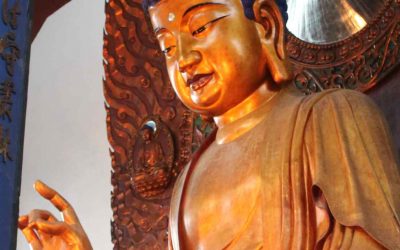Xin Ran – Sky Burial: An Epic Love Story of Tibet
In Brief: A work full of exoticism that describes some interesting customs of the Tibetan nomads, but fails to convey emotions to the reader.
Sky Burial: An Epic Love Story of Tibet is a novel set in the late 1950s. A tragic love story that takes place in the scene of the fighting between Chinese and Tibetans in the eastern region of Tibet, in the so-called Khampa War, as the Khampas, or Eastern Tibetans, were the protagonists of the fighting.
The story unfolds through the interview that the writer, a radio host of a famous program, conducts with an old woman, at first sight marginalized in today’s society. The story is reconstructed years later on the basis of the notes taken during the interview and possibly enriched by some trips to Tibet. This first process already departs from the innocence that could be foreseen initially by introducing in the narration some anachronisms and set phrases, which are in no way credible in the mouth of a person who presents herself as returning from decades of residence in Tibet.
This initial inadequacy in the adaptation of language to the different characters that appear in the novel, who belong to different social backgrounds, cultural worlds and even political periods characterized by well-defined languages, is maintained throughout the work, with the result that the reader is prevented from identifying with the characters and forced to read the work as the mere story of a woman who has experienced portentous adventures. For the novel is the story of a woman who, faced with the vague news that her newly wedded husband has been killed in an engagement during «The Khampas War», leaves her native Suzhou to enlist in a military unit bound for the same area. During her short military life, hardships and fighting are continuous. Before her unit is decimated, she escapes disgrace with the help of a Tibetan woman she has previously helped, spending dozens of years living with a family of Tibetan nomads, completely cut off from all outside communication.
This opportunity to describe the life and culture of the Tibetan nomads is used with little elegance, and the fragments of what might be called anthropological information are incorporated into the overall narrative with little fortune, maintaining their informative role but little literary meaning. The protagonist’s long stay with the Tibetan family is likewise dispatched in a not very elaborate way, because after a few brushstrokes that help to characterize the members of the family and a correct description of some of the events that break the monotony of their lives, the months turn into years and these into dozens of years, without the reader hardly noticing it, so that when the narrator assures that thirty years have passed, the reader thinks that he has missed something.
This estrangement of the main characters shown by the author is reflected in the reader, who does not end up being an accomplice in the moments of greatest drama, but rather contemplates them with the distant gaze of someone who is oblivious to it all. It is a pity that an original and interesting plot is wasted along the pages, but nevertheless it is necessary to emphasize the value of the story and the interest in the description of situations and environments rarely described in literature. That means that the shortcomings in the narrative level are sometimes compensated, so the book will surely manage to keep the interest of readers who, when choosing a novel by a Chinese author, already expect a ration of exoticism in its pages.
Cite this article as: Ceinos-Arcones, Pedro, «The first description of the Religion of the Yi,» in Ethnic China, 21 marzo 2021, https://ethnic-china.com/the-first-description-of-the-religion-of-the-yi/.
Last posts
The value of the Taotejing, the sacred book of the Taoists
In Peter Goullart The Monastery of the Jade Mountain. Unlike the Bible and the Koran. the Taoteking does not refer to the historical processes which led men, or rather a particular tribe among men, to the idea of One God. Neither does it describe in detail how this...
The path to Nirvana in the Kunming Dharani Pillar
The path to Nirvana in the Kunming Dharani Pillar The main courtyard of the Kunming Municipal Museum houses one of the most original art-works from the time of the Dali Kingdom (937-1253 CE) in Yunnan. It is called the Dharani Pillar of the Dizang Temple. It is a...
Legends of the Mother Goddess: Intro
From Leyendas de la Diosa Madre. Pedro Ceinos Arcones. Miraguano, 2007. Anyone who approaches the literature of the minorities of Southern China will discover numerous works where the leading role is played by a female goddess or deity. Whether dedicated to the...
Buddha as a true man: a different tale
In the fourth chapter of India in the Chinese Imagination: Myth, Religion, and Thought (edited by John Kieschnick and Meir Shahar, University of Pennsylvania Press, 2014), Nobuyoshi Yamabe contributes an article (Indian Myth Transformed in a Chinese Apocryphal Text:...
Yu garden in Shanghai: Archetype of Chinese garden
Pedro Ceinos Arcones. Yu garden in Shanghai: Archetype of Chinese garden. Dancing Dragons Books. 2019. (Excerpts from the book) The Yu Garden is Shanghai's main monument and the one that best summarizes the city's history over the past few centuries. A private garden...
The dog in China’s ancient tombs
Pedro Ceinos Arcones. La Magia del perro en China y el mundo. Dancing Dragons Books. 2019. (Excerpts from the book) The dog in China’s ancient tombs In China, dogs buried with their owners have been discovered in archaeological sites belonging to the most important...










